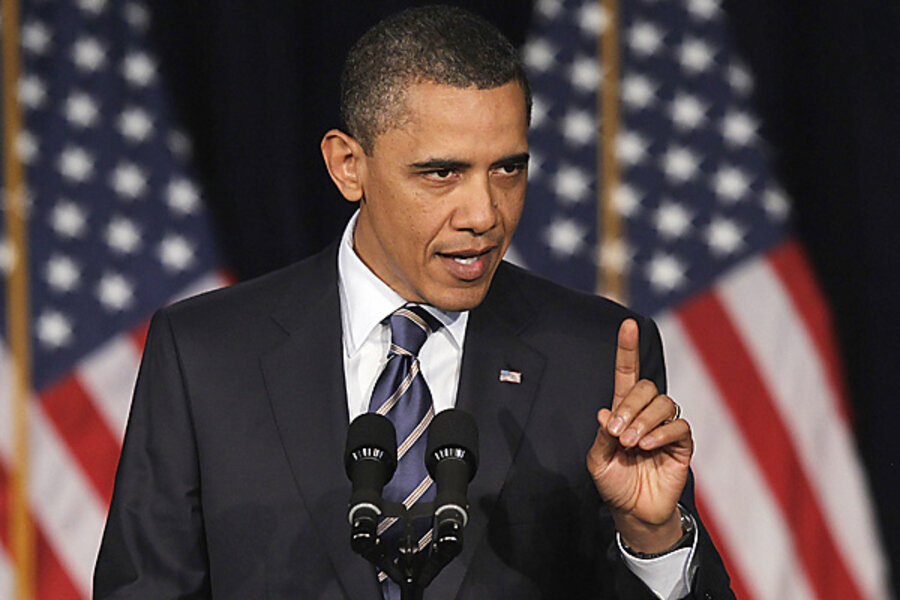What tax cuts can and can't do for the economy
Loading...
The biggest sticking point in the debt-limit talks has been the disagreement over tax policy. President Obama has been encouraged by his fiscal commission to insist that higher revenues be part of any major deficit-reduction deal — and to recommend that much of the revenue increase should come from broadening the tax base by reducing “tax expenditures.” Although Republicans are coming around to the idea that tax expenditures are just subsidies run through the tax code, many of their leaders stand firm on the position that revenues as a share of the economy not rise from current policy.
While President Obama and other Democrats want revenue increases, they don’t want any changes that would raise taxes on middle class or lower-income households, arguing that such taxes would be overly burdensome and would harm the economic recovery. Meanwhile, Republicans only want reduced tax expenditures to pay for cuts in marginal tax rates, asserting that they would be the path to stronger economic growth and in turn higher revenues.
So both sides are reluctant to change their tax-cutting ways, and they continue to have their own great expectations for tax cuts. But tax cuts don’t always live up to such expectations, because often the form of a tax cut is ill-suited for its touted economic purpose. The effectiveness of any particular tax cut in addressing the economy’s needs depends upon three factors:
1. How strong is the economy? In a downturn when the economy has idle capacity (unemployed workers, shuttered factories, vacant offices), the only way to increase GDP is by increasing demand for goods and services. Tax cuts steered toward the households and businesses most likely to spend the extra cash are more effective than tax cuts that benefit mostly higher-income households that save more of their income. (Tax cuts in general, however, are less effective than direct government purchases of goods and services, which pay off dollar for dollar.) In a full-employment economy, in contrast, growing the economy requires increasing the productive capacity or “supply side” — which means finding tax policies that encourage labor supply and saving.
2. How is the tax cut structured? In a full-employment economy, tax cuts that reduce marginal tax rates encourage increases in labor supply and saving, and hence longer-term economic growth via the “supply side.” In a recessionary economy, however, any kind of tax cut can stimulate demand for goods and services simply by steering dollars toward households and businesses likely to spend them quickly. Tax cuts that emphasize rate reduction and supply-side growth in times of full employment are likely to go disproportionately to high-income households, while those for the purpose of demand-side stimulus are typically designed to go more broadly to lower- and middle-income households.
3. How is the tax cut paid for? If a tax cut is intended to encourage supply-side, longer-term economic growth, deficit financing is like starting from standing in a hole and counting on the tax cut being effective enough to propel one not just back to ground level but beyond. The tax cut must encourage private-sector activity by more than enough to offset the negative economic effects of more government borrowing. A more reliable way to encourage economic growth is for the government to pay for beneficial tax cuts with spending cuts or revenue increases that have comparably little effect on economic decisions. In a recessionary economy, however, this approach may weaken the stimulative effect of the tax cut on the demand for goods and services, unless the combined policies shift dollars away from households and businesses that do more saving to those that spend most of their income.
So whether any particular tax cut is good for the economy really depends on how the tax cut is structured and what the economy needs at the time. Tax cuts aren’t the “be-all and end-all” of economic policy that they’re often claimed to be, no matter how attractive they might be politically.
Add/view comments on this post.
--------------------------
The Christian Science Monitor has assembled a diverse group of the best economy-related bloggers out there. Our guest bloggers are not employed or directed by the Monitor and the views expressed are the bloggers' own, as is responsibility for the content of their blogs. To contact us about a blogger, click here. To add or view a comment on a guest blog, please go to the blogger's own site by clicking on the link above.





